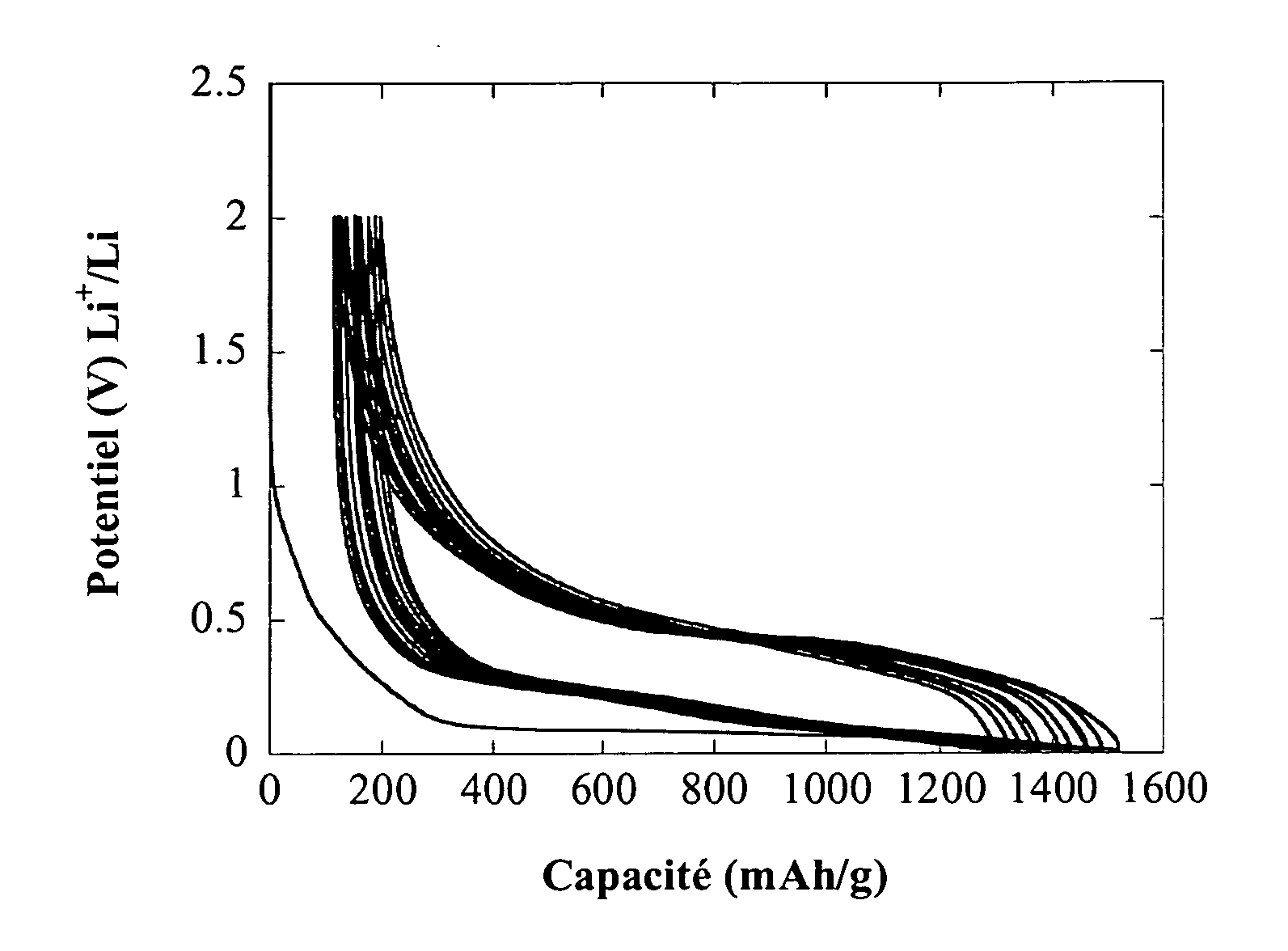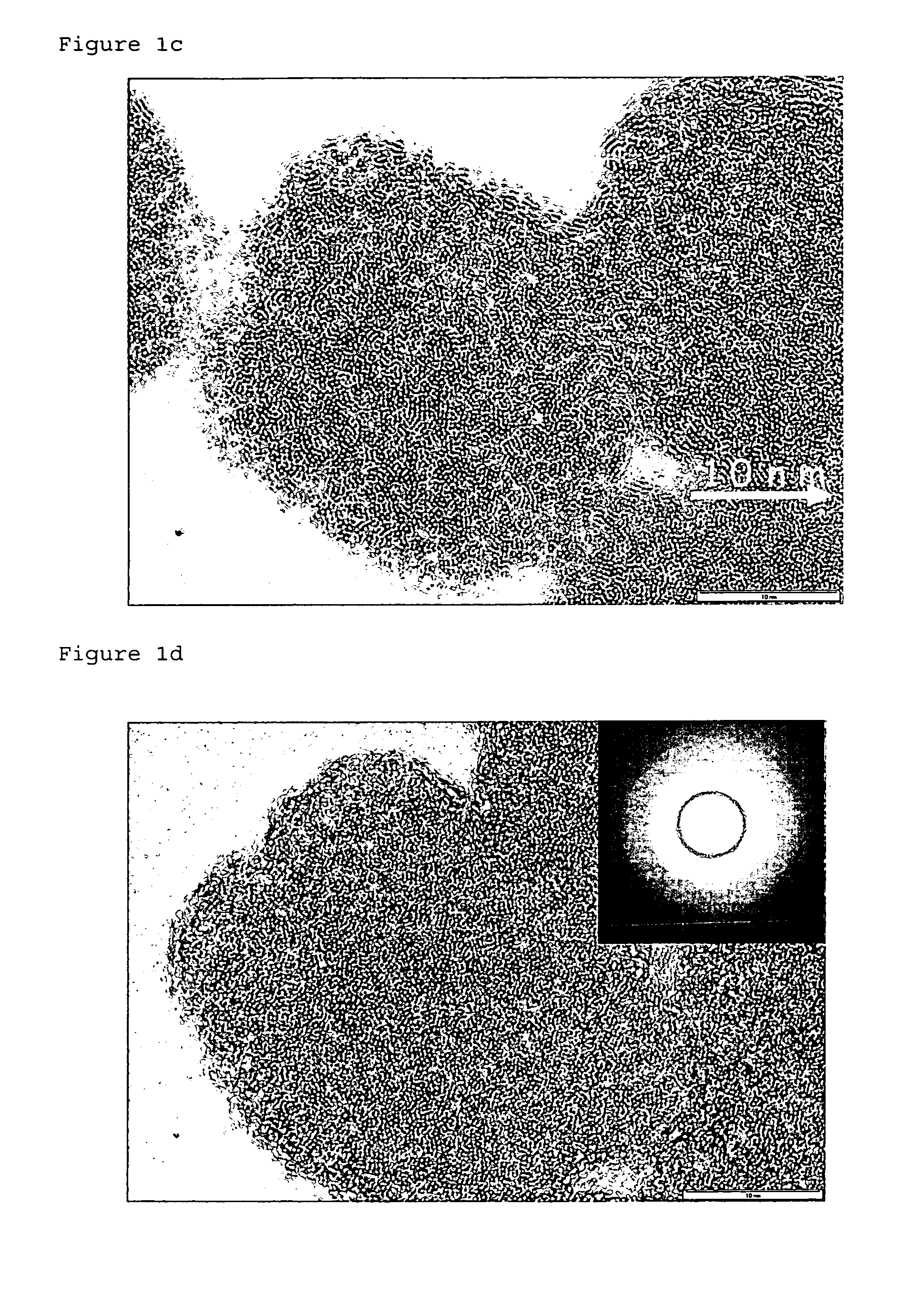Nanocomposite material for the anode of a lithium cell
a lithium cell and nanocomposite material technology, applied in the direction of organic electrolyte cells, conductive materials, natural mineral layered products, etc., can solve the problems of poor or even catastrophic cycling performance, limited energy delivered by lithium cells, and high mass capacity of silicon
- Summary
- Abstract
- Description
- Claims
- Application Information
AI Technical Summary
Benefits of technology
Problems solved by technology
Method used
Image
Examples
examples
[0082] Tests were carried out:
1) firstly on a half-cell containing:
[0083] an anode containing an Si—C composite according to the invention [0084] a counter-electrode and a reference electrode of metallic lithium.
2) secondly on a cell containing: [0085] an anode containing an Si—C composite according to the invention [0086] a cathode based on LiCoO2.
I. Tests on a Half-Cell
[0087] Nano-amorphous silicon is prepared under the following conditions. A mixture of silane and argon is introduced into the reaction enclosure at a pressure of 6.6×10−4 bar. The temperature of the substrate is about 250° C. The power of the radio frequency discharge is about 10 to 20 W. The silicon powder collected on the substrate is then mixed with a quantity of PVC sufficient for obtaining a Si1.6—C6 nanocomposite containing 62% by weight of carbon. The mixture is heated to 900° C. The nanocomposite thus obtained is used in the manufacture of an anode. This anode is assembled with a counter-electrode a...
PUM
| Property | Measurement | Unit |
|---|---|---|
| Temperature | aaaaa | aaaaa |
| Temperature | aaaaa | aaaaa |
| Temperature | aaaaa | aaaaa |
Abstract
Description
Claims
Application Information
 Login to View More
Login to View More - R&D
- Intellectual Property
- Life Sciences
- Materials
- Tech Scout
- Unparalleled Data Quality
- Higher Quality Content
- 60% Fewer Hallucinations
Browse by: Latest US Patents, China's latest patents, Technical Efficacy Thesaurus, Application Domain, Technology Topic, Popular Technical Reports.
© 2025 PatSnap. All rights reserved.Legal|Privacy policy|Modern Slavery Act Transparency Statement|Sitemap|About US| Contact US: help@patsnap.com



